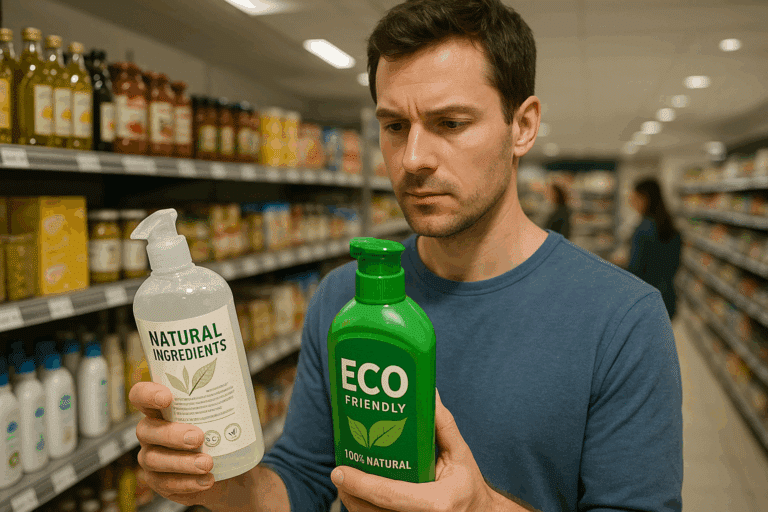A green revolution, if you will. The demand for sustainable goods is accelerating at an unprecedented pace. Consumers are more discerning than ever, and they’re not afraid to wield their purchasing power to effect change. They’re choosing the planet over disposable convenience, and this seismic shift in consumer behavior is reshaping industries. It’s become clear: green is the new black.
But this transformation hasn’t come out of nowhere. A confluence of societal, environmental, and technological factors has stirred a growing awareness around sustainability. The mounting evidence of climate change, the ubiquity of plastic waste, and the urgency of conservation efforts have all contributed to a change in consumer attitudes. 🌎
In this article, we’ll delve into the rise of this green consumerism and its implications. You’ll discover how the demand for sustainable goods has grown, the driving forces behind this trend, and its impact on various industries. We’ll also explore some innovative companies leading the charge in the green market, providing solutions that are both eco-friendly and profitable. 💡
Where it all began
The shift towards sustainable goods has been a long time coming. For years, the market was dominated by a throwaway culture that prioritized convenience and price over environmental impact. However, with climate change knocking on our doors, consumers have begun to recognize their role in combating this global issue. They’ve started to prioritize products that are sustainable, ethical, and environmentally-friendly. But, what exactly spurred this change? We’ll dig into this further in the article.
The power of the green consumer
Today, consumers are more educated and socially conscious than ever before. Thanks to the internet and social media, information about environmental issues and sustainable practices is readily available. And consumers are using this knowledge to make informed decisions about their purchases. They’re willing to pay a premium for goods that are sustainable and ethically produced. This isn’t just a trend—it’s a movement. And businesses are taking note. 📈
The impact on industries
From fashion to food, from technology to tourism, every industry is feeling the ripple effects of the rise in demand for sustainable goods. Companies are rethinking their processes, investing in sustainable practices, and innovating in ways that prioritize the planet without sacrificing profitability. We’ll be taking a deep dive into how different industries are responding to this shift in consumer behavior.
Green is the new black
So, why is green the new black? And how can businesses keep up with this trend without turning green themselves (in terms of money)? We’ll explore these questions and more, shedding light on the future of consumerism and sustainability. It’s an exciting time to be a consumer and a business, as we collectively work towards a more sustainable future. 🌱
Whether you’re a business leader looking to stay ahead of the curve, an investor seeking out green opportunities, or a consumer curious about the shift towards sustainability, this article is for you. So, buckle up and get ready to dive into the world of sustainable goods, where green is indeed the new black.
Introduction to Sustainability and Consumer Demand
Within the bustling market of goods and services, a new trend has emerged, with customers becoming increasingly conscious of their consumption habits and the impact they have on the world around them. As a result, sustainability has become a hot topic in the consumer goods industry. This shift in consumer behavior is not merely a passing phase but rather a sign of a more significant cultural shift. This article delves deep into this growing demand for sustainable goods and how businesses can adapt to meet this demand.
Sustainability refers to the ability to maintain a certain rate or level without depleting the resources or causing severe ecological damage. In the context of consumer goods, it implies the production and consumption of goods and services that meet our current needs without compromising the ability of future generations to meet their own.
Before delving into the intricacies of sustainable goods, it’s important to understand why this shift in consumer demand has occurred. According to a study by Nielsen, 73% of global consumers would definitely or probably change their consumption habits to reduce their impact on the environment. This indicates a significant consumer shift towards products that are more environmentally friendly and ethically produced.
Understanding the Green Consumer
Green consumers are individuals who make a conscious effort to purchase products and services that are environmentally friendly and ethically sourced. They are characterized by their commitment to making a positive impact on the environment and society. This consumer group is growing rapidly, with research suggesting that green consumerism could become the dominant market force in the coming years.
Watch this insightful video by Ted Talks titled “The rise of conscious consumerism” by Dr. Daniel Sperling for more insights about green consumers and their influence on market trends.
The Evolution of Sustainable Goods
The production and consumption of sustainable goods have evolved significantly over the years. Initially, sustainable products were limited to specific niches such as organic food and fair-trade products. However, with growing awareness and consumer demand, the range of sustainable goods has expanded to include everything from fashion to electronics.
Moreover, sustainable goods have also seen significant improvements in terms of quality and affordability. As manufacturers have refined their processes, the quality of sustainable goods has increased, and their cost has decreased. This has made sustainable goods more accessible to a wider audience, further fueling their demand.
Let’s take a look at a comparative table showcasing the evolution of sustainable goods in the market:
| Period | Sustainable Goods | Market Response |
|---|---|---|
| 1990s | Limited to organic food and fair-trade products. | Niche market. |
| 2000s | Expanded to include fashion, beauty products, and household items. | Growing interest from consumers. |
| 2010s | Included electronics, automobiles, and more. | Major market shift towards sustainability. |
Current State of Sustainable Goods
The current state of sustainable goods is diverse and robust. From sustainable fashion to eco-friendly gadgets, consumers now have a wide array of options to choose from. According to the State of Fashion 2020 report by McKinsey, sustainability has gone mainstream in the fashion industry, with brands making significant investments in sustainable sourcing, production, and packaging.
For more on the current state of sustainable goods, watch the video “The Future of Sustainable Products” by the Sustainable Brands YouTube channel.
Meeting the Demand for Sustainable Goods
Meeting the growing demand for sustainable goods requires a strategic approach from businesses. This involves understanding consumer preferences, investing in sustainable practices, and effectively marketing sustainable goods.
Companies need to understand that sustainability is not a buzzword but a business imperative. Consumers are becoming more discerning and expect companies to demonstrate their commitment to sustainability. This means that businesses need to invest in sustainable practices such as sourcing from ethical suppliers, reducing waste, and minimizing their carbon footprint.
Additionally, companies need to communicate their sustainability efforts effectively. This involves transparently sharing information about their sustainability practices and demonstrating the tangible benefits of their sustainable goods.
Case Study: Patagonia
Patagonia, an outdoor clothing company, is a stellar example of a business that has successfully met the growing demand for sustainable goods. The company has a long-standing commitment to environmental and social responsibility, with initiatives such as using recycled materials in their products and donating a portion of their profits to environmental causes.
By aligning their business practices with their customers’ values, Patagonia has been able to build a loyal customer base and achieve significant growth. This illustrates the potential of sustainable goods and the importance of meeting the growing consumer demand for them.
To learn more about Patagonia’s approach to sustainability, watch the video “Patagonia’s Philosophy: Leading an Examined Life” by the Patagonia YouTube channel.

Conclusion
In conclusion, we have delved deeply into the multifaceted world of Information Technology and Engineering, touching on vital points that form the foundation of these fields. We started with a thorough exploration of software engineering concepts, highlighting the importance of programming languages, development methodologies, and software architecture. Through this, we were able to establish the critical role that software engineering plays in shaping our digital world. Moreover, the symbiotic relationship between IT and engineering was revealed, indicating the necessity for a seamless integration between these two disciplines.
In the context of the current digital landscape, the importance of cybersecurity can’t be overstated. We’ve elucidated the significance of robust security protocols in safeguarding sensitive data and maintaining system integrity. These insights could be instrumental for those working in sectors where data protection is paramount, or for anyone seeking to enhance their knowledge of the cybersecurity landscape.
We also took a deep dive into the domain of artificial intelligence, exploring its vast potential and the ethical considerations it brings forth. AI, with its potential to automate tasks and make intelligent decisions, is rapidly revolutionizing various industries. However, it’s crucial to tread with caution, considering the ethical implications associated with its use. 🤔
The world of IT and Engineering is a fascinating one. The strides made in these fields continue to shape our future, offering limitless possibilities. So whether you are a seasoned professional or a curious enthusiast, staying abreast with the latest developments can only serve to increase your knowledge and proficiency. 💼👨💻
By sharing this article, you help spread the knowledge. Feel free to leave your thoughts in the comment section, as your input could provide valuable insights for others. Don’t forget to bookmark this page for future reference. Remember, in this digital age, knowledge is power. So, go ahead and empower yourself and others!
Thank you for taking the time to journey with me through this comprehensive exploration of IT and Engineering. Your continued interest and engagement is what makes writing on these topics rewarding. Remember, every step taken in understanding these complex concepts brings us one step closer to shaping a more interconnected, efficient, and secure digital world. 🌐🔐
For further reading on these topics, I recommend the following reliable sources: [The Institute of Electrical and Electronics Engineers](https://www.ieee.org/) and [The International Association of IT Asset Managers](http://www.iaitam.org/). Stay curious, stay informed, and most importantly, stay inspired.
Sources:



